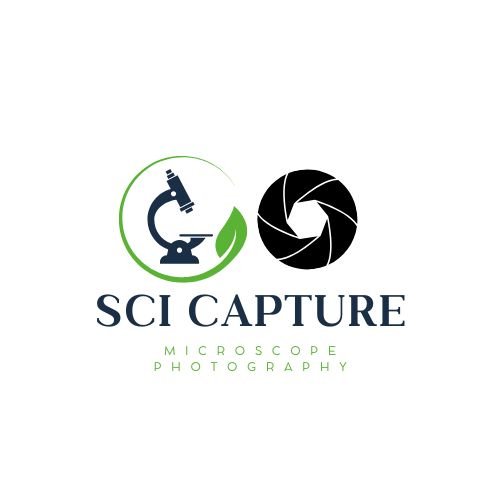Scientists primarily trust OME-TIFF as the gold standard for microscopy imaging data due to its open format and structured metadata storage. For large datasets and cloud environments, newer formats like OME-NGFF and Zarr offer superior performance with efficient chunking capabilities. While proprietary formats create accessibility barriers, open formats guarantee your data remains usable across platforms without specialized software. Choosing the right format considerably impacts your data’s long-term value and collaborative potential.
OME-TIFF: The Gold Standard for Microscopy Data Preservation

When preserving microscopy data for long-term accessibility, OME-TIFF stands as the definitive gold standard. This open file format combines structured data storage with extensive metadata through its integrated OME-XML header, ensuring your imaging data remains organized and accessible.
You’ll appreciate how OME-TIFF supports various microscopy modalities while maintaining data integrity across different software platforms. This interoperability is vital for collaboration and sharing within the scientific community.
As an indirect standard in biological imaging, OME-TIFF bridges proprietary formats with open science practices.
The format’s adherence to FAIR principles (Findable, Accessible, Interoperable, Reusable) means your microscopy data can be efficiently integrated with other datasets, maximizing its research value and extending its useful life beyond your immediate project.
Next-Generation File Formats: OME-NGFF and Zarr for Cloud-Based Imaging
As cloud computing transforms scientific data management, OME-NGFF and Zarr are leading the revolution in bioimaging file formats.
Built upon Zarr and influenced by TIFF and HDF5, OME-NGFF offers efficient storage and access for multidimensional images across various imaging modalities.
OME-NGFF combines Zarr’s architecture with TIFF and HDF5 principles to deliver exceptional performance for complex bioimaging data.
The format’s chunking capability allows you to load only relevant portions of large datasets, greatly improving rapid access to pixel data without downloading entire files.
Performance benchmarks show OME-NGFF outperforms traditional formats like TIFF, especially in cloud storage environments.
Tools like bioformats2raw and omero-cli-zarr help you convert and export data seamlessly.
Proprietary vs. Open Formats: Navigating Vendor-Specific Challenges

Despite their widespread use in scientific imaging, proprietary file formats create significant barriers to effective data sharing and analysis. When you’re working with biological imaging data from different microscope vendors like Zeiss (.czi), Leica (.lif), or Nikon (.nd2), you’ll face interoperability challenges that impede collaboration.
| Format Type | Impact on Research Workflow |
|---|---|
| Proprietary | Locks your data behind vendor walls |
| Proprietary | Requires costly specialized software |
| Open (OME-TIFF) | Enhances cross-platform accessibility |
| Open (OME-TIFF) | Preserves valuable metadata integrity |
| Open (OME-NGFF) | Enables cloud-based collaborative analysis |
Converting your frequently accessed data to standardized open formats like OME-TIFF or the next-generation format OME-NGFF improves data accessibility and supports FAIR principles, ultimately accelerating scientific discovery through better standardization.
Optimizing Performance: Chunk Sizes and Access Speeds for Large Datasets
While traditional imaging formats work well for small datasets, they quickly become bottlenecks when handling the massive files common in modern scientific imaging.
Traditional formats falter when confronted with today’s enormous scientific datasets, creating performance roadblocks.
When working with large datasets, you’ll need file formats that optimize performance through proper chunking strategies.
For efficient data handling, consider these critical factors:
- Chunk sizes directly impact access speeds – smaller isn’t always better, as too many individual chunks can reduce performance.
- NGFF formats (like OME-NGFF and Zarr) outperform classical formats by dynamically loading only relevant data chunks – up to 10× faster on cloud storage than HDF5.
- Optimized files support parallel reads, allowing you to stream image data remotely at speeds comparable to local access.
FAIR Principles: Ensuring Microscopy Data Remains Accessible and Reusable

Scientific advancement depends on data that’s not just collected but also findable and usable by others. The FAIR principles provide a framework to guarantee your bioimaging datasets maintain long-term value. Converting proprietary formats to open formats like OME-TIFF dramatically improves data accessibility and interoperability.
| FAIR Principle | Challenge | Solution |
|---|---|---|
| Findable | Hidden data | Standardized metadata |
| Accessible | Proprietary formats | Convert to OME-TIFF |
| Interoperable | Format incompatibility | Use OME-NGFF standard |
| Reusable | Lost processing history | Include analysis workflows |
| Future-proof | Format obsolescence | Community-maintained standards |
Frequently Asked Questions
What Is the Most Commonly Used Image File Format in Medical Imaging?
You’ll find DICOM is the most commonly used format in medical imaging. It standardizes storage and transmission of medical images with associated data, supporting various modalities like radiology, pathology, and cardiology.
What Is the Best Image Format for Scientific Paper?
For scientific papers, you’ll want to use TIFF or PNG for raster images since they’re lossless, or PDF/EPS for vector graphics. Always check your target journal’s specific requirements before submission.
What Is the File Format for Image Processing?
For image processing, you’ll need to choose between several formats. RAW offers maximum editing flexibility, TIFF preserves quality, JPEG is compact, HEIF balances size and quality, and DICOM serves medical imaging specifically.
What Is the Highest Quality Image Format?
The highest quality image format is RAW. You’ll retain full sensor data with 14-bit color depth, giving you maximum editing flexibility. It’s uncompressed, preserving all details for extensive post-processing without quality loss.
In Summary
You’ve learned that choosing the right file format impacts your imaging data’s long-term value. Trust OME-TIFF for reliable preservation, consider OME-NGFF and Zarr for cloud workflows, and remain cautious of proprietary formats. Remember to optimize chunk sizes for your specific access patterns and adhere to FAIR principles. By making informed format decisions today, you’re ensuring your scientific images remain accessible, interoperable, and reusable for years to come.





Leave a Reply